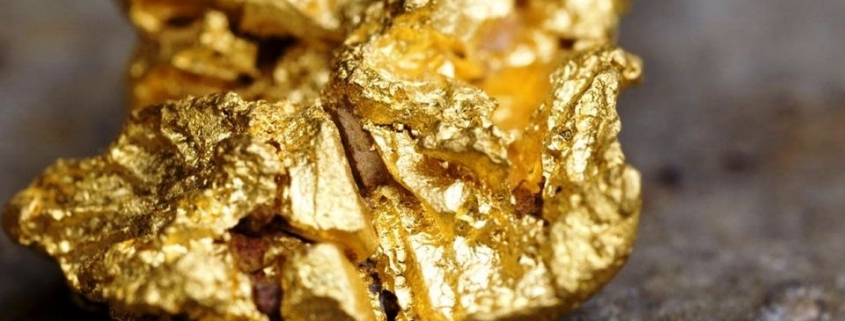What does heap leach mining involve?
In the gold ore beneficiation technology, heap leach mining is widely used due to its simplicity, low energy consumption, minimum equipment configuration, low capital construction investment, and low production cost. Processes oxidized ore and by-product ore produced during the development of mines. For example, off-surface gold deposits.
In production, the common gold ore heap leaching process mainly includes six stages: ore preparation, leaching pad construction, pile building, leaching solution preparation, liquid distribution and collection, and rich liquid (precious liquid) processing.
[ Ore Preparation ]
The ore preparation stage mainly includes crushing, granulation and pretreatment. The purpose is to improve the leachability of ore and the permeability of leaching plie, avoid uneven flow, blockage, gully flow, and other phenomena, improve the recovery rate of a gold mines and reduce the consumption of leaching solution.
- Crushing
Different crushing processes are implemented according to the properties of gold ore and process requirements. Waste ore heap leaching is generally not broken (30%), the ore particle size after secondary crushing is 30-50mm (53%), and the ore particle size after tertiary crushing is 9-19mm (17%). The practice has proved that crushing is one of the key technical links to ensuring good permeability of ore and improving the gold leaching rate.
- Granulation
For fine ore and ore with high clay content, granulation is required first. Add a certain amount of (3-6kg / T) cement and lime adhesive to the ore, and add an appropriate amount of sodium cyanide solution to keep the ore at 8-12% humidity and solidify for 8-12h to form pellets. Through granulation treatment, the permeability of the ore heap is improved, oxygen supply is sufficient, gold is dissolved by cyanide in advance, and the leaching rate of gold is greatly improved.
- Pretreatment
During the granulation process, sometimes it is necessary to add a leaching solution to pretreat the ore, in order to improve the permeability of the leaching heap and the heap leach mining rate of useful components of the ore.
[Pad Construction]
In order to collect rich liquid and prevent solution leakage, the bottom of the storage yard needs to be trimmed and paved (or bedding) before stacking. The materials used for the construction of impregnation pads are mainly clay, sand, gravel, asphalt, reinforced concrete, plastic film or rubber plastic board. Depending on the material, the thickness of the cushion is generally 300-600mm. The longitudinal and transverse drainage ditches are paved with block ore on the cushion, and finally, a layer of large ore is paved on the whole bottom plate to protect the bottom cushion.
[Pile Building]
The purpose of pile building is to make the ore pile have good and uniform permeability and ensure that the slope will not collapse. The height of the ore pile mainly depends on the permeability of the ore pile, the content of the leaching agent in the leaching solution, and pile building equipment and methods.
Generally, the heap height is 3-9m, and the leaching pile of raw ore can be as high as 46m. Stacking methods include the multi-stacking method, multi-layer method, slope method and so on.
[Solution Preparation]
Water and leaching agent are formulated into a solution or leaching solution for heap leach mining useful components from gold ore according to a certain formula. Common leaching agents include sulfuric acid, nitric acid, hydrochloric acid, sodium carbonate, sodium bicarbonate, ammonium carbonate, ammonium bicarbonate, ferric sulfate, chloride, sodium iodide, potassium iodide, ammonium sulfate, air, oxygen, permanganate, nitrogen oxides, hydrogen peroxide and chlorate. The formula and dosage of the leaching solution shall be determined according to the mineral type, mineral composition and chemical composition. Alkaline sodium cyanide solution is often used as the leaching solution for gold heap leaching.
[Liquid Distribution and Collection]
Liquid distribution is to evenly spray the leaching solution on the top surface of the ore pile. The liquid distribution system is composed of a liquid distribution tank, pump, infusion pipe, spray pipe, and sprayer laid on the ore pile.
[Rich Liquid Processing]
Gold was extracted by carbon adsorption and desorption electrolysis ( zinc powder replacement precipitation). Activated carbon becomes gold-loaded carbon by adsorbing gold in the pulp. After the adsorption operation is completed, the pulp containing gold-loaded carbon is sent to the carbon extraction screen through the air lifter to separate the pulp from the activated carbon. After screening and washing, the slurry is sent to desorption electrolysis operation.
Under the condition of high temperature and high pressure, anions easily adsorbed by activated carbon are added into the desorption system to replace Au (CN) 2 – to obtain gold mud and lean carbon, so as to realize the desorption of cash. The precious liquid obtained by desorption of gold loaded carbon is recovered by the ionization method to obtain solid gold.
We can provide you with more information about the gold heap leaching plant. If you have any questions, please contact: Whatsapp:+8613319277356, Email:[email protected]







